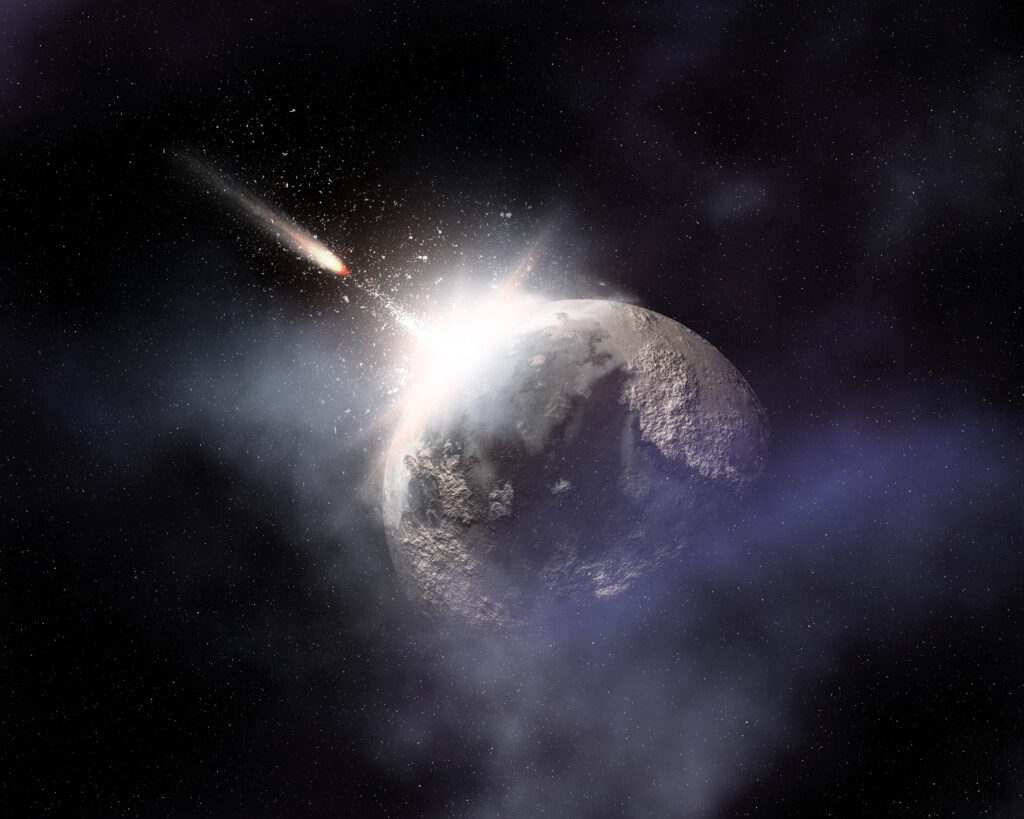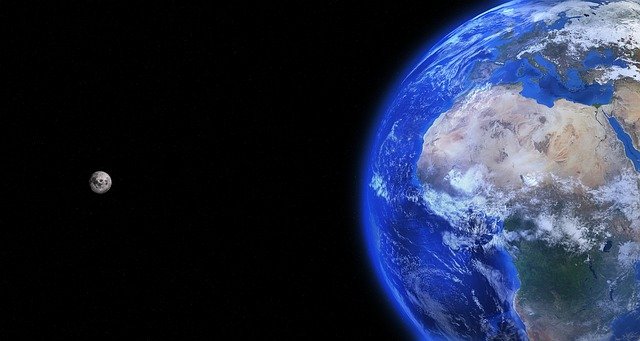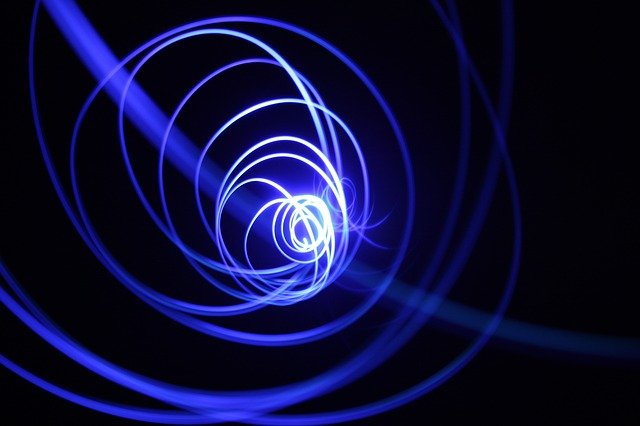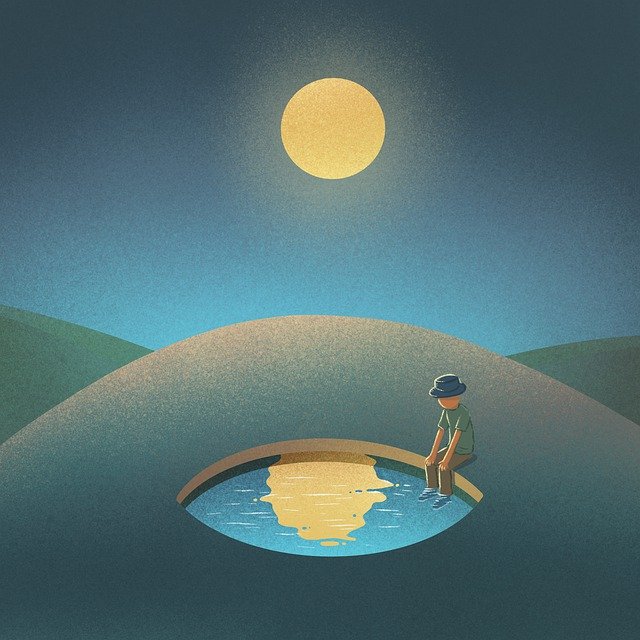*This post may contain affiliate links. This means we may make a commission if you purchase an item using one of our links*
If the Moon had a submoon, then it would orbit the Moon like moons orbit planets, governed by the same gravitational and other physical laws. A submoon of the Moon could only exist sustainably in a limited region of space between the Moon and Earth, with orbit and spin determined largely by the Moon. Outside this area, a submoon would be destroyed or pushed out of orbit into outer space.
Whether you’re learning about the laws of gravity or just gazing up at the night sky, it’s reasonable to ask yourself the question of whether the Moon could have its own moon. The answer is multi-faceted and extremely interesting both for budding astronomers and those of us who are simply eternally curious. Read the rest of our article to find out more.
Can Our Moon Even Support A Sub-moon?
Table of Contents

In theory, our Moon could support a submoon. In practice, it does not.
A sub-moon is the moon of a moon, or a satellite orbiting another natural satellite. Theoretically submoons could exist but in reality no submoons have been identified in the orbit of the Earth’s own Moon or other moons considered most likely to support them (e.g. Jupiter’s moon Callisto and Saturn’s moons Titan and Iapetus).
According to astronomic analysis, a stable moon orbit can only exist in a limited region between the host body’s Hill sphere and Roche limit.
The Hill sphere is the area around the planet / host body where the host body exerts the dominant gravitational force on the satellite rather than any other massive objects nearby, such as the Sun. (For example, the Moon is in the Earth’s Hill sphere, the region where the Earth exerts a stronger gravitational force than the Sun.)
The Roche limit is the minimum distance at which a satellite can orbit safely without being disintegrated by the tidal forces which result from gravity pulling more strongly on the closer side of an object than the further side. The rings of Saturn are thought likely to be the remains of moons whose orbit shrank too close to the planet and were torn apart…
Factoring in these limits, research calculations suggest that 10 km-scale submoons could only exist in orbit around massive (1000 km-scale) moons on wide-separation orbits around host planets. Most moons in our solar system do not meet these criteria and lack the basic dynamics to support a submoon even in theory.
Moons that are smaller than 1000km or too near to their host planet would be destabilized by tidal effects. Even in a stable situation, the Moon is shifting away from the Earth at roughly four centimeters each year, because of Earth/Moon tidal interactions.
The Moon may one day in future have an artificial satellite submoon on a stable orbit. NASA’s planned Lunar Gateway is intended as a staging post for potential deep space exploration to Mars and beyond.
How Would Earth Affect The Submoon?

While the Moon would be the main body exerting gravitational force on a submoon, the Earth and Sun are also close enough and massive enough to exert some gravitational pull on any submoon of the Moon, perhaps influencing its exact orbit and long term stability. Both the Moon and the Earth would influence tidal forces on any submoon.
Earth’s gravity influences the spin of the Moon, which would then influence the submoon, with three potential outcomes for the submoon’s orbit:
- The orbit could shrink to the point that it collides with the planet.
- The orbit could grow to be almost equal to the Hill Sphere which is will cause it to be ejected from the Moon’s system.
- The orbit’s rate of expansion or contraction could happen sufficiently slowly that the submoon is able to exist for billions of years.
A range of potential Moon orbits would be destabilized by perturbations from both the Sun and the Earth. This destabilization further restricts the already limited orbital region in which submoons could exist. Further research and detailed calculations would be needed to investigate these effects fully.
Do Other Planets Have Moons That Can Support A Submoon?
Saturn’s moons Titan and Iapetus, Jupiter’s moon Callisto, and Earth’s Moon are theoretically capable of hosting long-lived submoons but in practice do not have any submoons. Looking at its orbital separation and estimates of its mass and size, the new potential exomoon Kepler-1625b-I also be theoretically capable of hosting a submoon.
NB In the case of Kepler-1625b-I (an unconfirmed moon the size of Neptune which may be on a wide orbit of Jupiter), it appears that there is also a major orbital inclination which could affect the stability of potential submoons.
It may be that while all these moons are dynamically capable of supporting a sub-moon, the formation pathways which could create submoons in the first place are not viable, so that they never come into being.
It is also possible that our Moon and others possessed submoons at some point billions of years in the very distant past. If these submoons did not lie in the right place between the Hill Sphere and Roche Limit, they would either have been destroyed or expelled from orbit due to destabilizing tidal effects.
Would Having A Submoon Affect The Moons Orbit?

The Moon would exhibit tidal bulges generated by both Earth and the submoon, with internal dissipation then leading to changes in the Moon’s spin and orbit. However, this effect is likely to be small. The mass of the submoon would be so low in comparison to the Moon and Earth that submoon influence on the Moon’s or Earth’s rotation may be excluded from simplified calculations.
Summary
If the Moon had a moon, then it could give us some clues and new evidence to help further our understanding of how planets, moons and solar systems are formed and how they evolve. In reality the Moon does not have a submoon and nor does any other known moon in our solar system.
The Earth’s Moon, Titan and Iapetus (two of Saturn’s moons), and Callisto (one of Jupiter’s moons), are all theoretically capable of hosting a sub-satellite in dynamic terms. It may be that formation of submoons is not possible, or that these moons once hosted submoons which have long since been destroyed or pushed out of orbit by tidal forces. Further research would be needed to investigate these possibilities.
We may not have a natural submoon, but one day in future our Moon could have an artificial submoon, if NASA’s plans for a Lunar Gateway, or some similar space staging post, come to fruition.
References
https://academic.oup.com/mnrasl/article/483/1/L80/5195537?login=true
https://www.nature.com/articles/s41550-019-0726-y?proof=t%3B
https://www.forbes.com/sites/quora/2018/06/13/will-the-moon-ever-stop-drifting-away-from-earth/?sh=1a2bae038d5e
https://www.nasa.gov/gateway/overview


